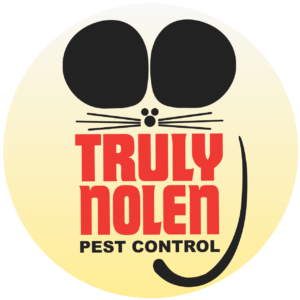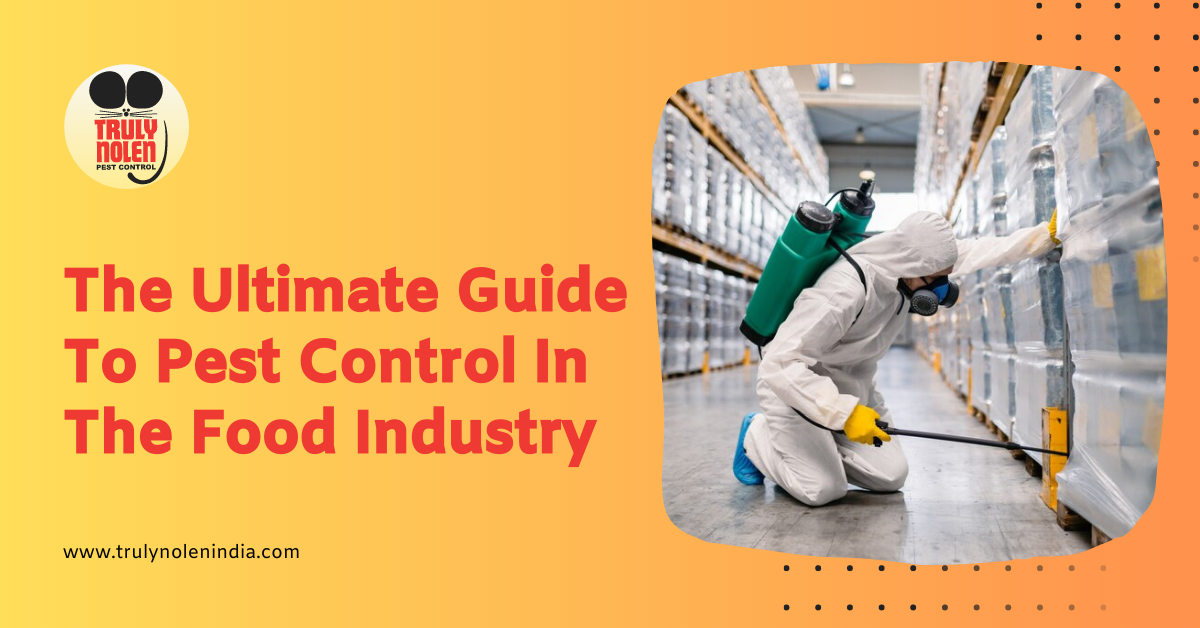Bugs in your burgers? Rodents in your pantry? Are these uninvited guests causing chaos in your kitchen? Are you tired of facing reputation damage and compliance issues due to these pesky creatures?
Pests may be tiny, but their impact on your operations can be monumental! We understand the hidden battle you face against pests lurking in the shadows.
So, if you dream of a thriving food processing unit with zero tolerance for pests, get ready to turn this vision into reality.
Our blog, ‘The Ultimate Guide to Pest Control in the Food Industry,’ is here to empower you with simple yet effective pest control techniques for your food processing unit.
Let’s dive in!
What Is Pest Control In Food Processing?
Pest control in food processing refers to managing and preventing pests, such as insects, rodents, birds, and other organisms, in facilities involved in food production, processing, storage, and distribution. Maintaining food safety and quality is crucial to preventing contamination and damage to food products.
Pest control is absolutely necessary in food processing units. To know more read our blog- How Important Is Pest Control In The Food Processing Industry?
The Primary Food Industry Facilities That Require Pest Control

Pest control in the food industry is crucial to maintain hygiene, prevent contamination, and ensure the safety and quality of food products. Here are some of the leading facilities within the food industry that typically require pest control measures:
- Food processing plants: These facilities transform raw food materials into processed food products. They often have multiple areas, such as production lines, storage areas, packaging sections, and loading docks, that need protection against pests.
- Warehouses and storage facilities: These facilities store food products before distribution. Pests can infest stored goods, leading to contamination and product damage. Proper pest control is necessary to prevent infestations in storage areas.
- Restaurants and food service establishments: Kitchens, dining areas, storage spaces, and waste management areas all require pest control measures to prevent infestations and maintain cleanliness.
- Retail stores and supermarkets: Pests like rodents, insects, and flies can contaminate products on display, shelving areas, and storage rooms. Pest control is essential to protect the integrity of food products.
- Grain mills and flour mills: Stored grains are highly attractive to pests, and the milling process itself can create conducive conditions for infestations. Pest control is crucial in maintaining grain quality and preventing contamination.
- Food service transportation: Vehicles and transport containers used for delivering food products are also susceptible to pest infestations. Proper pest control is required to prevent pests from entering and contaminating the transported goods.
It’s important to note that pest control measures should be tailored to each facility’s needs and comply with applicable regulations and guidelines for food safety and pest management in the respective region.
Identifying the Primary Culprits: Major Pests in the Food Industry
The food industry faces various pests that can pose significant challenges and risks. Some of the main pests commonly encountered in the food industry include:
- Rodents: Rats and mice are significant concerns as they can contaminate food products with their droppings, urine, and hair. They can also cause damage to packaging and infrastructure.
- Insects: Several types of insects can be problematic, including flies, cockroaches, ants, beetles, and stored product pests. They can infest storage areas, contaminate food, and compromise hygiene standards.
- Stored product pests: These include various species of beetles, weevils, and moths that infest stored grains, flours, cereals, dried fruits, and other packaged food items.
- Cockroaches: These resilient pests can thrive in warm and moist environments, and they are known to carry pathogens that can contaminate food products.
- Flies: Common types of flies such as house and fruit flies, can transmit disease-causing organisms and contaminate exposed food.
- Bacteria and fungi: They can contaminate food products and cause foodborne illnesses or spoilage.
It’s important to note that the specific pests encountered can vary depending on the location, type of food facility, and environmental factors. Implementing effective pest control measures is essential to prevent infestations and maintain high food safety and quality standards.
The Consequences Of Ignoring Pest Control In The Food Industry

Ignoring pest control in the food industry can have several detrimental consequences, including:
- Contamination of food products: Pests can contaminate food through direct contact, droppings, urine, hair, and the pathogens they carry. This contamination can lead to foodborne illnesses and pose health risks to consumers.
- Compromised food safety and quality: Pests introduce bacteria, viruses, and other pathogens into the food processing and storage areas. This can result in product recalls, loss of consumer trust, and damage to the reputation of food businesses.
- Regulatory non-compliance: Many regions have strict regulations and guidelines regarding pest control in the food industry. Failure to comply with these regulations can lead to penalties, fines, and legal consequences.
- Loss of inventory and financial losses: Pests can damage packaging, containers, and infrastructure, leading to spoilage and loss of food products. Additionally, contaminated products may need to be discarded, resulting in financial losses for food businesses.
- Negative impact on business reputation: Pests in food facilities can significantly damage the reputation of businesses. Consumers expect clean and safe food, and reports of pest infestations can lead to a loss of trust and decreased customer loyalty.
- Increased risk of customer complaints and legal action: Pests in food products can cause illnesses and allergic reactions in consumers. This can lead to customer complaints, product liability claims, and potential legal action against the food business.
Navigating operational disruptions: Dealing with pest infestations can disrupt daily operations, including production, storage, and distribution. This can result in delays, reduced productivity, and increased costs to address the pest issues.
Overall, ignoring pest control in the food industry can have severe consequences, jeopardizing food safety, consumer health, business reputation, and financial stability. Implementing proactive and comprehensive pest control measures is essential for maintaining a safe and hygienic environment within food facilities.
Effective Strategies for Pest Control in the Food Industry

Pest control in the food industry involves implementing a comprehensive and proactive approach to prevent, detect, and eliminate pests. Here are some critical steps and methods commonly used for pest control in the food industry:
- Integrated Pest Management (IPM): Adopt an IPM approach, which focuses on the prevention, monitoring, and control of pests through a combination of strategies. This includes using non-chemical methods whenever possible and employing pesticides as a last resort.
- Regular inspections: Conduct routine inspections of the facility to identify signs of pest activity, potential entry points, and areas of vulnerability. Inspections should cover storage areas, processing areas, equipment, loading docks, and other relevant spaces.
- Sanitation practices: Maintain high standards of cleanliness and hygiene throughout the facility. Clean up spills promptly, remove food debris, and ensure proper waste management. Good sanitation practices make the environment less attractive to pests.
- Exclusion measures: Seal any potential entry points, such as gaps in walls, doors, windows, and utility penetrations. Install door sweeps, screens, and other physical barriers to prevent pests from entering the facility.
- Proper storage and handling: Store food products off the floor and away from walls. Use secure and pest-proof containers for storage. Rotate stock to prevent the harboring of pests in stored items. Properly dispose of damaged or expired products.
- Pest monitoring: Implement monitoring devices, such as sticky traps, pheromone traps, and bait stations, to detect and monitor pest activity. Regularly check and record the results to identify trends or areas of concern.
- Pest-proofing measures: Implement measures specific to the types of pests common in your area. For example, install screens on windows and vents to prevent insect entry, and place rodent bait stations strategically.
- Employee training: Train staff on proper hygiene practices, pest awareness, and reporting procedures. Encourage employees to report any signs of pest activity immediately.
- Collaboration with pest control professionals: Work with licensed pest control professionals specializing in the food industry. They can provide expertise in pest identification, develop tailored pest management plans, and perform regular inspections and treatments as needed.
- Recordkeeping and documentation: Maintain detailed records of pest control activities, including inspections, gap audit report, service log sheet, pest sighting report, trend analysis, RCA, and corrective actions. This documentation helps track trends, demonstrate compliance with regulations, and support ongoing pest management efforts.
Remember, each food facility has unique requirements, so developing a customized pest control plan in consultation with professionals familiar with your specific needs and local regulations is essential. Regular monitoring, proactive measures, and a focus on prevention are critical to effective pest control in the food industry.
Control Pests And Preserve Quality With Truly Pest Solution!

Truly Elite Protection System (TEPS) by Truly Pest Solution is a hassle-free and eco-friendly pest control solution designed specifically for the food processing industry.
TEPS is based on Integrated Pest Management (IPM), which means we apply scientific, investigative, technical, and managerial expertise to assess the risk of existing or potential pest infestations within or around your premises. Our primary goal is to minimize the use of chemical, biological, or physical interventions that could contaminate your food products.
At Truly Pest Solution, we ensure full compliance with national and international audit requirements within the food processing industry. We meet the rigorous standards set by audits such as AIB and HACCP, FSSAI, YUM international, ISO, and others, guaranteeing top-notch adherence to quality and safety protocols.
In the ever evolving food industry, safeguarding your products from unwanted pests is our top priority. With our unrivaled expertise and commitment, you can trust us to provide highly effective pest management for your facility.
Experience excellent pest control in the food processing industry. Don’t let pests jeopardize the safety and quality of your food products any longer.


Leave a Reply